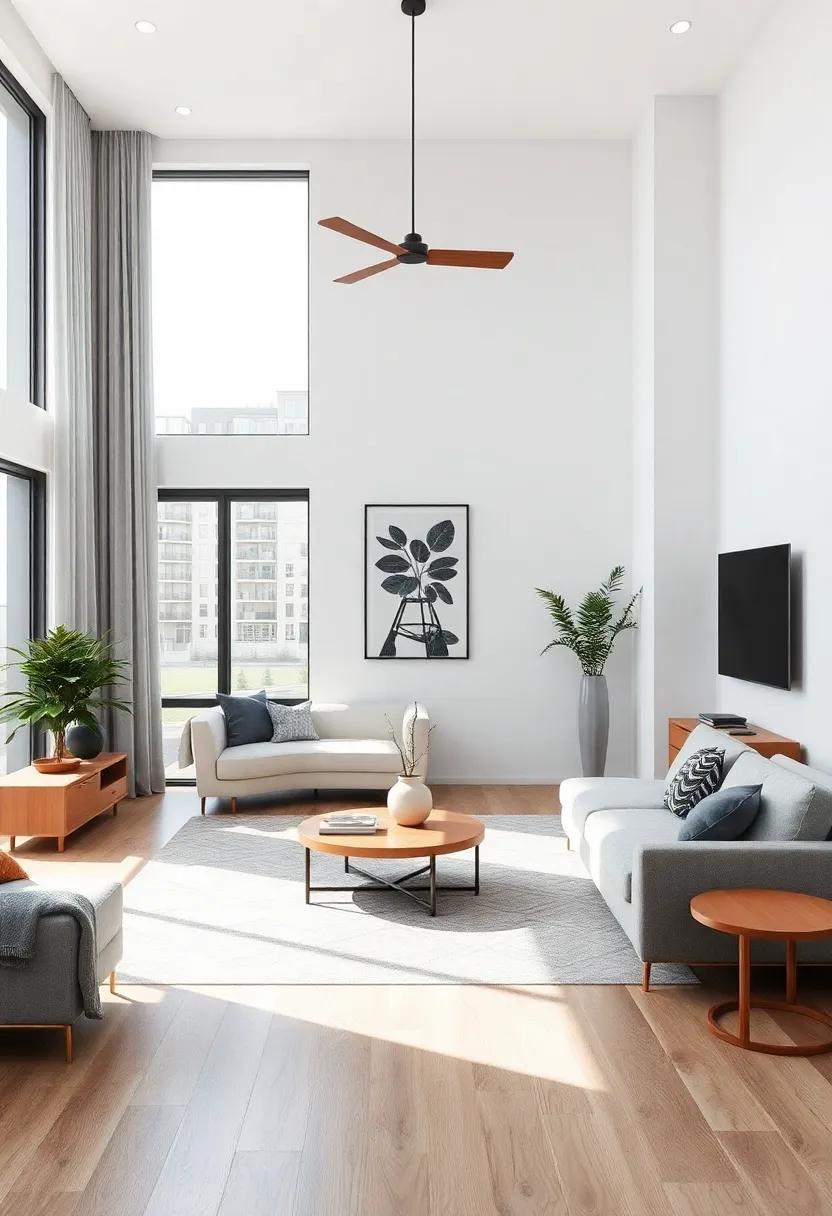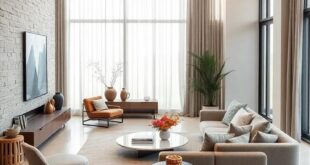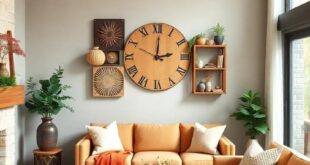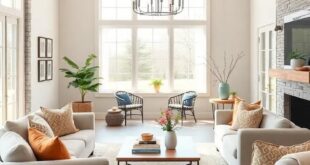In the bustling world of urban living, where square footage frequently enough belies the potential for comfort and style, the open-concept small living room emerges as a canvas for creativity and functionality. This design paradigm encourages light to flow freely and invites a sense of spaciousness, even in the coziest of apartments. However, mastering the balance between aesthetics and practicality can be a daunting task. In this article,we will explore innovative strategies and thoughtful design principles that transform a compact living area into a stylish haven. From optimizing furniture placement to selecting color palettes that create visual depth, we’ll provide inspiration and insights for crafting a small living room that is not only a reflection of your personal style but also an embodiment of modern living. Join us as we embark on a journey to maximize both style and space,proving that even the tiniest of rooms can make a grand statement.
Embracing the Beauty of Open-Concept Living in Small Apartments
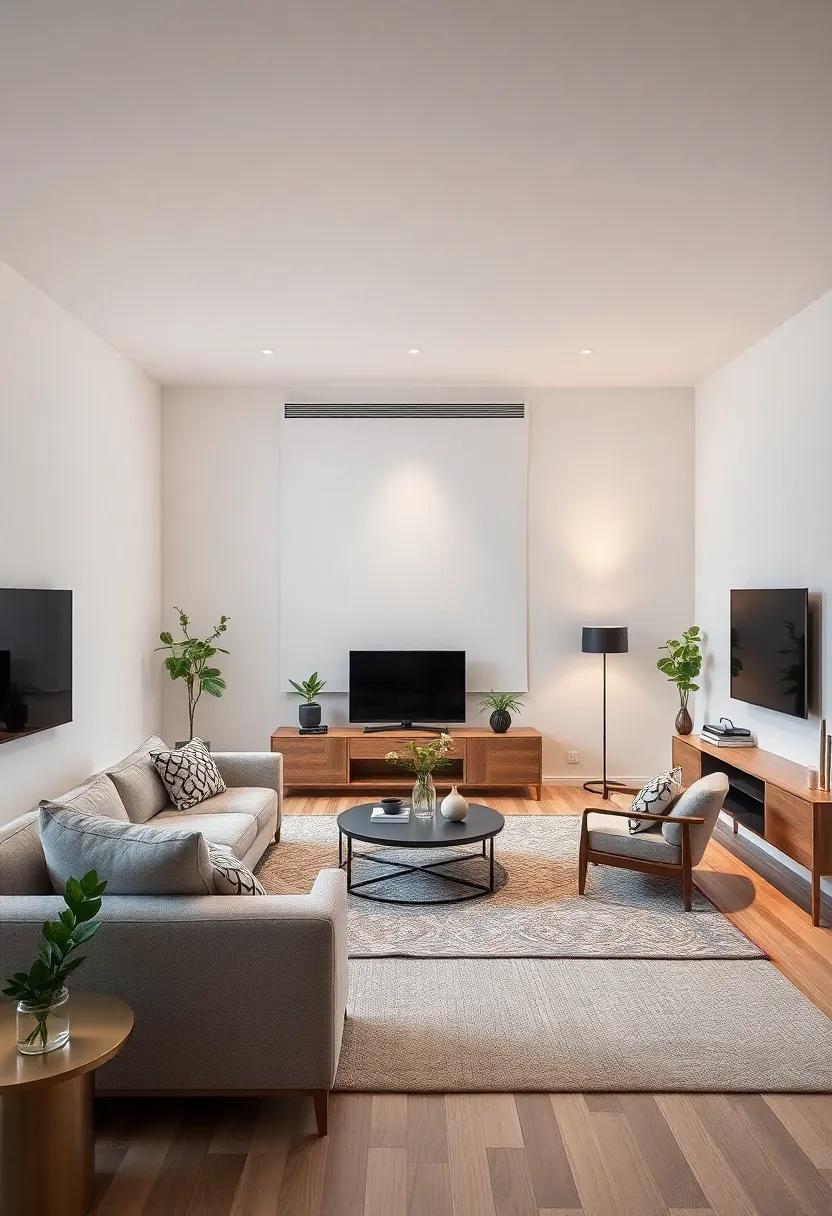
Open-concept living allows you to blur the lines between different areas of your small apartment, creating a seamless flow that can make the space feel larger and more inviting. By removing unnecessary walls, you not only enhance the natural light but also foster a sense of togetherness, perfect for small gatherings or family activities. To maximize this effect, consider integrating multi-functional furniture that can easily adapt to your lifestyle. As a notable example,a sleek sofa could transform into a bed for guests,while a compact dining table might also serve as a workspace when needed.
When it comes to decor, a cohesive color scheme can visually connect the areas in your open-concept layout. Opt for a palette of soft hues, which can promote relaxation, while incorporating accent colors through decor items like cushions, artwork, or plants to add character. Smart use of mirrors can also amplify light and create an illusion of space. Don’t forget to personalize, making the environment feel uniquely yours. For inspiration on designing stylish small spaces, consider exploring resources at Apartment Therapy.
Creating a Seamless Flow Between Living, Dining, and Kitchen Areas
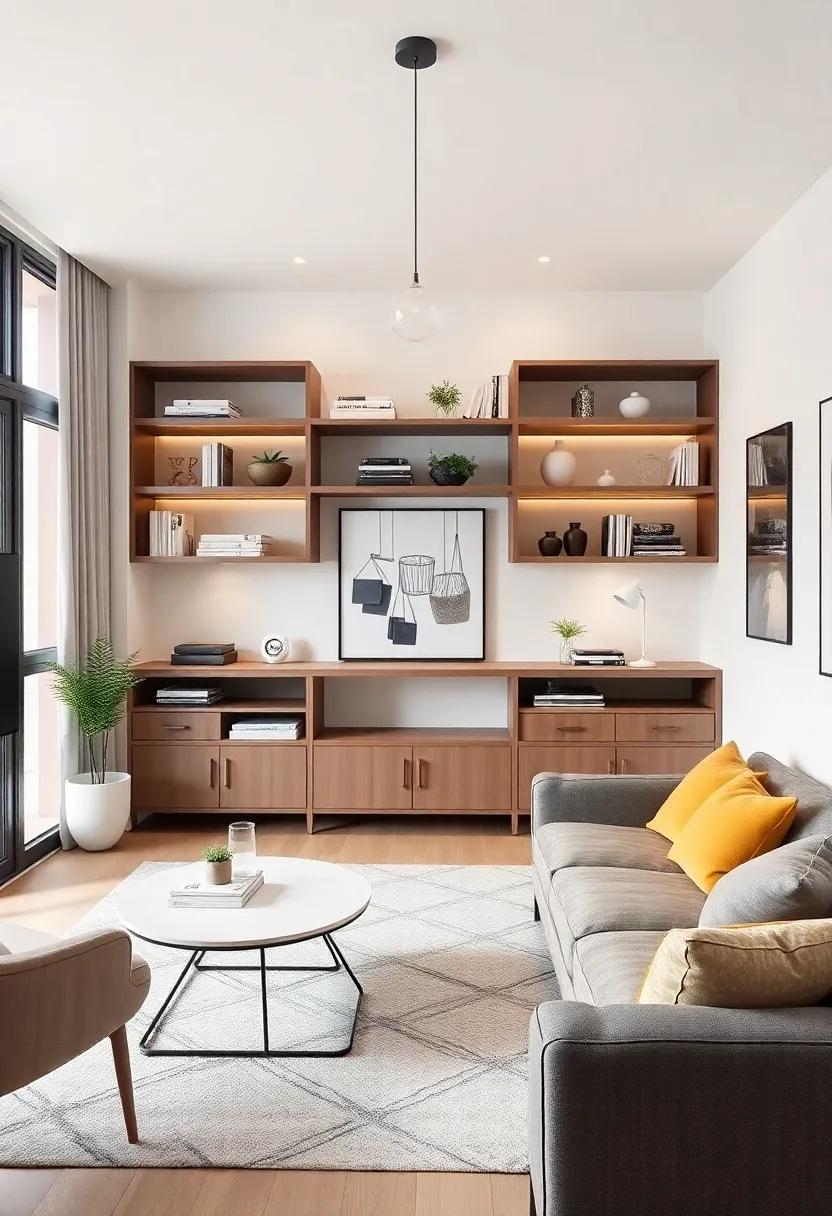
To create a harmonious transition between living,dining,and kitchen areas in an open-concept design,consider the use of consistent color palettes and materials. Using a neutral base can set a calming tone,while carefully chosen accent colors can inject personality. Integrating similar textures—such as wood finishes or fabrics—across furniture, cabinetry, and soft furnishings can further reinforce the connection between these spaces. An effective way to delineate areas without physical barriers is to utilize area rugs that define living and dining zones, allowing each functional space to feel distinct yet cohesive.
Layering lighting is another vital element to enhance the seamless flow. Employ a combination of ambient, task, and decorative lighting to create a warm and inviting atmosphere. Incorporate pendant lights above the dining table coupled with floor lamps in the living area to draw attention and add depth. Additionally, consider utilizing open shelving or glass partitions as visual breaks that maintain an open feel while providing functional storage. This approach creates a dynamic interaction between the spaces, ensuring they flow together beautifully while serving their intended purpose. For more tips on achieving harmony in your home, visit Apartment Therapy.
Choosing a Cohesive Color Palette to Harmonize Your Space
When it comes to designing a small living room, color selection plays a pivotal role in creating an enviable ambiance. A accomplished color palette should encompass shades that not only reflect your personality but also promote a sense of openness and unity in your space. Soft, neutral hues like pale grays and warm beiges can serve as an excellent foundation, allowing natural light to bounce throughout the room. You might consider adding pops of color through accent furniture or decorative pillows in stunning jewel tones or pastels, which can invigorate the overall aesthetic without overwhelming the senses.
To establish harmony, it’s beneficial to choose a palette of three to five colors that complement one another.This can involve layering different shades of the same color or including contrasting hues that enhance each othre. Visual consistency can be achieved through the use of patterns and textures — as a notable example, incorporating a patterned rug or textured throws can tie your color scheme together beautifully. Additionally, using a color wheel can guide you in selecting complementary or analogous colors. for more guidance on color choices, you can explore resources on design principles at stoneyard.com.
Utilizing Smart Furniture Choices to Maximize Functionality
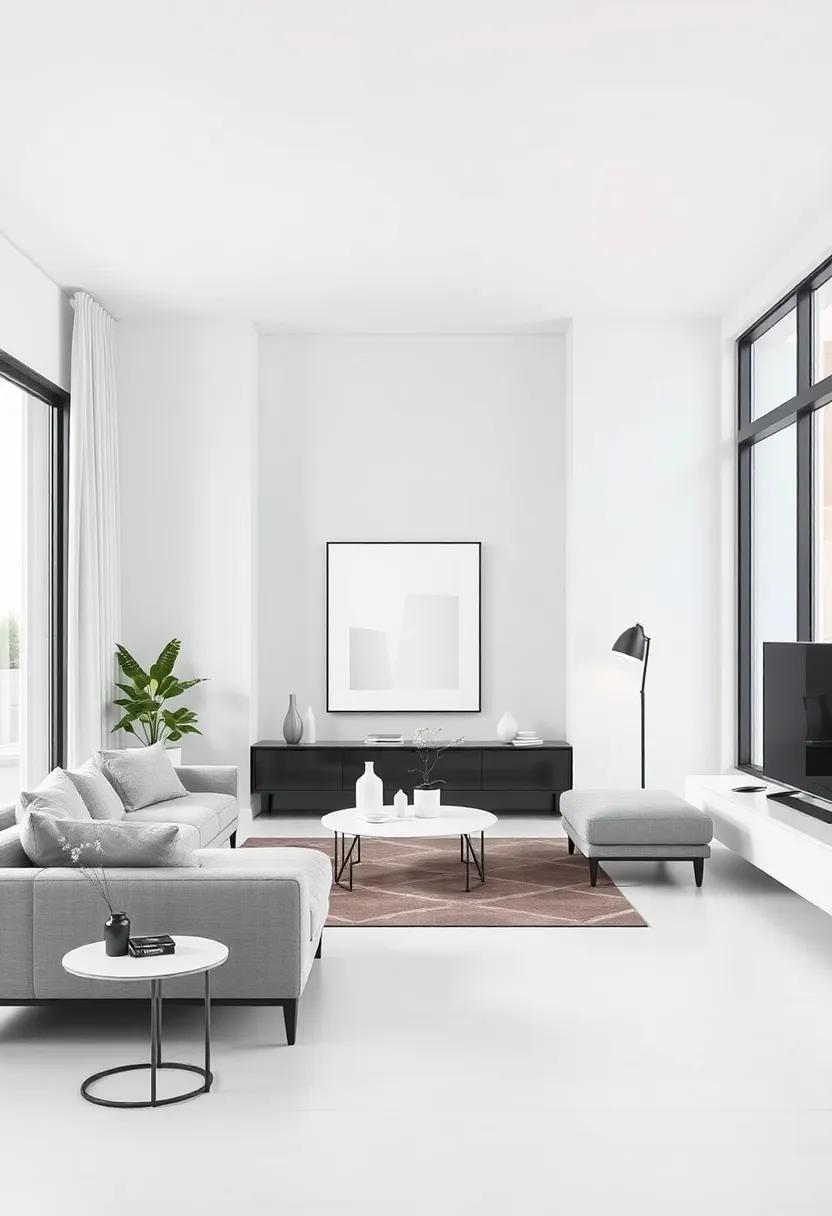
in a small open-concept living room, selecting the right furniture can transform limited space into a well-organized, stylish area. Multi-functional pieces are key; consider a sleek sofa bed that can double as a guest bed or a coffee table that lifts to reveal hidden storage. opt for modular furniture that can be rearranged easily to fit your needs, such as stacked stools or a sectional with movable sections. This versatility allows you to tailor the space for both entertainment and relaxation effortlessly, ensuring that no corner is wasted.
Another smart strategy is to incorporate transparent or light-colored furniture, which can create an illusion of more space while still providing necessary functionality. Furniture made from materials like glass or acrylic can serve as tables or display surfaces without overwhelming the room’s visual flow. When adding storage, think vertically. Wall-mounted shelves or cabinets help keep items off the floor and maintain a clean, airy feel. By choosing pieces that blend seamlessly into your decor while maximizing storage and functionality, you can achieve a perfectly balanced open-concept living area. For more ideas on furniture choices and space planning, visit Apartment Therapy.
Integrating Multi-Functional Pieces for Efficient Space Usage
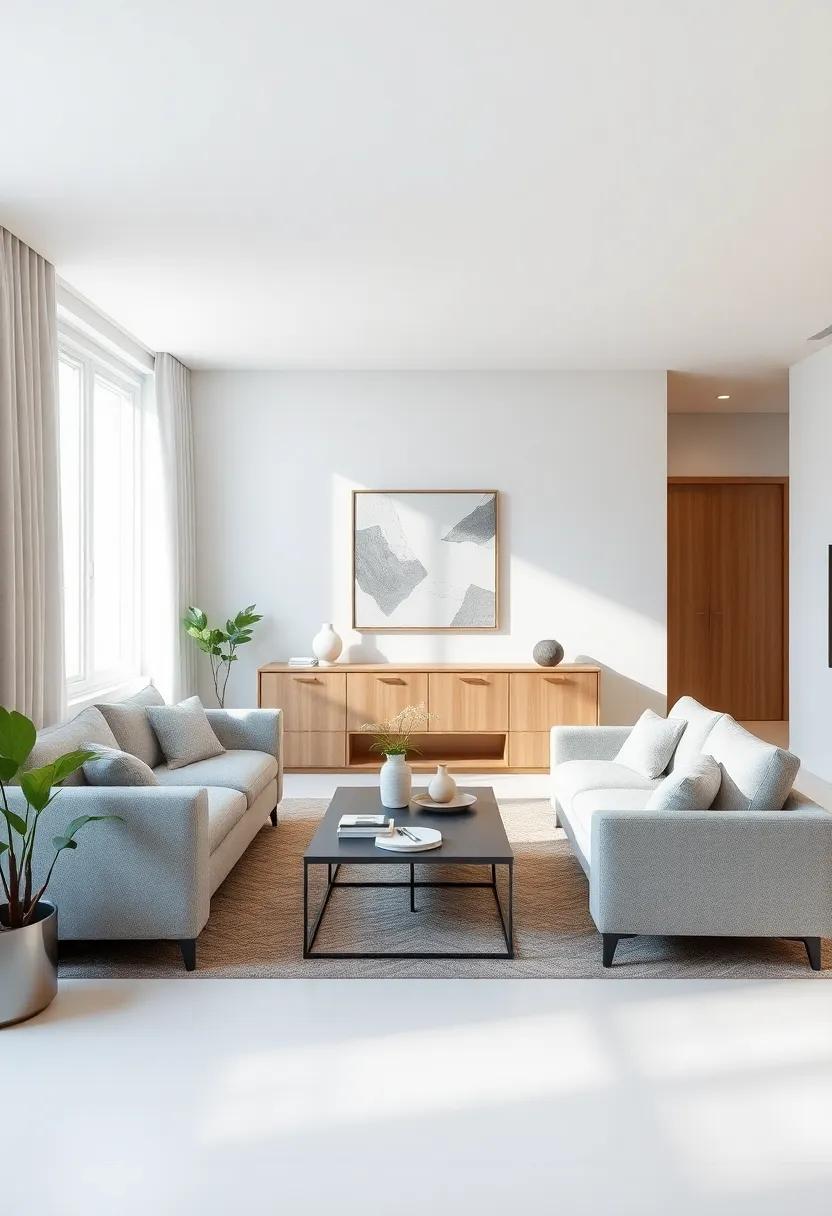
In an open-concept small living room, the smart integration of multi-functional pieces plays a crucial role in maximizing both style and space. Select furniture that serves dual purposes, such as a sofa bed that can transform into overnight accommodation or an ottoman that offers seating while featuring hidden storage for blankets and games. Additional options include:
- Convertible coffee tables: Elevate the tabletop for dining or work tasks.
- Wall-mounted desks: Foldable desks can be tucked away when not in use.
- Modular shelving units: Adaptable configurations can display decor and provide functional storage.
To better visualize how these pieces can come together, consider creating a layout that highlights each item’s versatility. For instance, place a sectional sofa that wraps around a coffee table with built-in compartments for books and magazines. Grouping furniture in a way that maintains open pathways makes the space feel larger while allowing for easy movement. Here’s a simple table to help guide your furniture selection:
| Furniture Piece | Primary Function | Additional Benefits |
|---|---|---|
| Sofa Bed | Seating | Guest Sleeping Space |
| Ottoman | Footrest | storage |
| Lift-top coffee Table | table | Dining Surface |
By being intentional with your selections, you can create a harmonious flow that promotes both functionality and aesthetic appeal within your living space. Explore more inspiration on Apartment therapy for additional ideas on maximizing small interiors.
Incorporating Light and Airy Decor to Enhance Natural Brightness
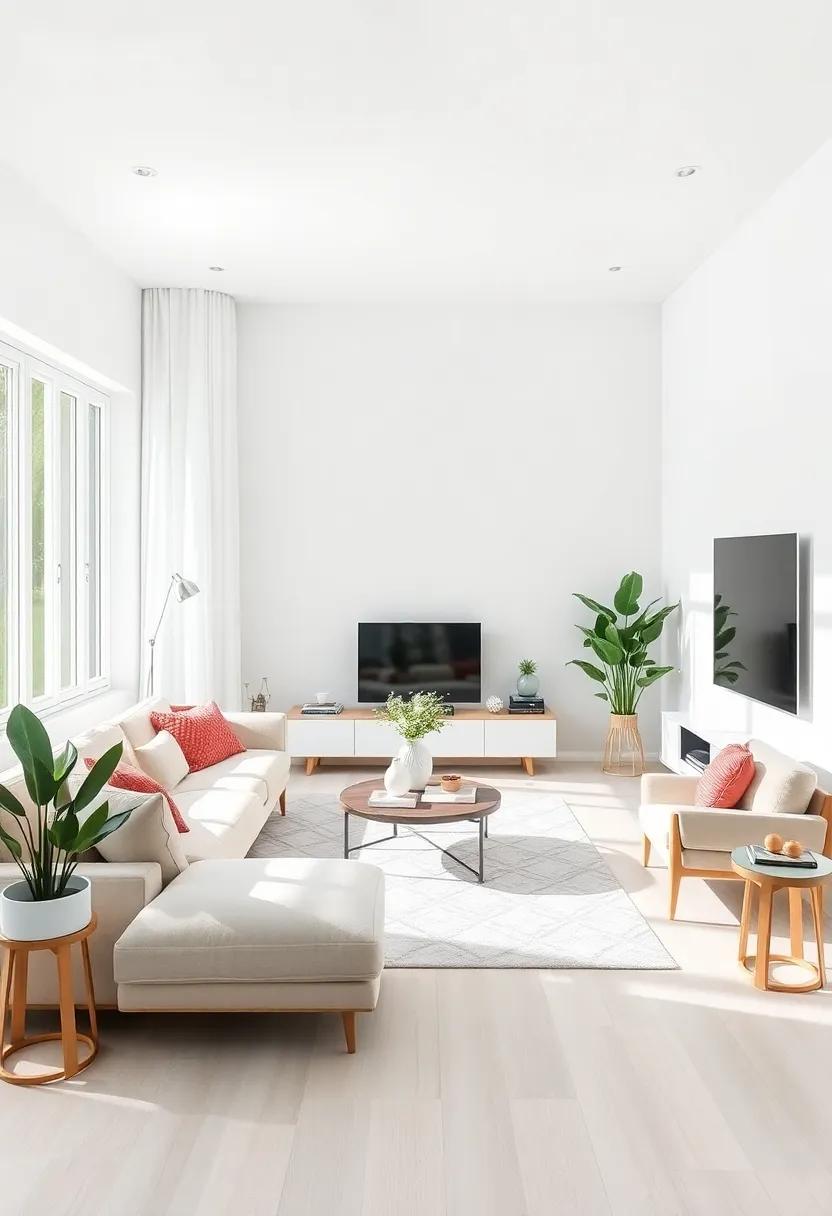
Embracing a light and airy decor style can significantly transform your small living room,enhancing the natural brightness and creating an inviting atmosphere. Start by selecting a palette of soft, neutral colors—think pale whites, soft greys, and muted pastels—to reflect light and make the space feel larger. When choosing your furniture, look for streamlined, minimalist designs that provide functionality without overwhelming the room. Consider incorporating pieces with light wood finishes or clear acrylic accents to maintain an open feel. Remember to include mirrors in your design; they not only add a decorative touch but also reflect sunlight, amplifying brightness in your space.
Texture plays a crucial role in achieving that airy vibe without compromising on style. Layer various materials such as plush textiles, delicate sheer curtains, and woven accents to create depth while keeping the overall look light. Accent your living room with greenery—strategically placed plants can bring life to the decor while contributing to a fresh atmosphere. When accessorizing, choose a few carefully curated art pieces or decorative objects that resonate with the light theme, ensuring they don’t clutter the visual space. For more inspiration, check out Houzz, where you can find countless examples of light-filled, open-concept room designs.
Strategically Placing Mirrors to Elevate Perception of Space
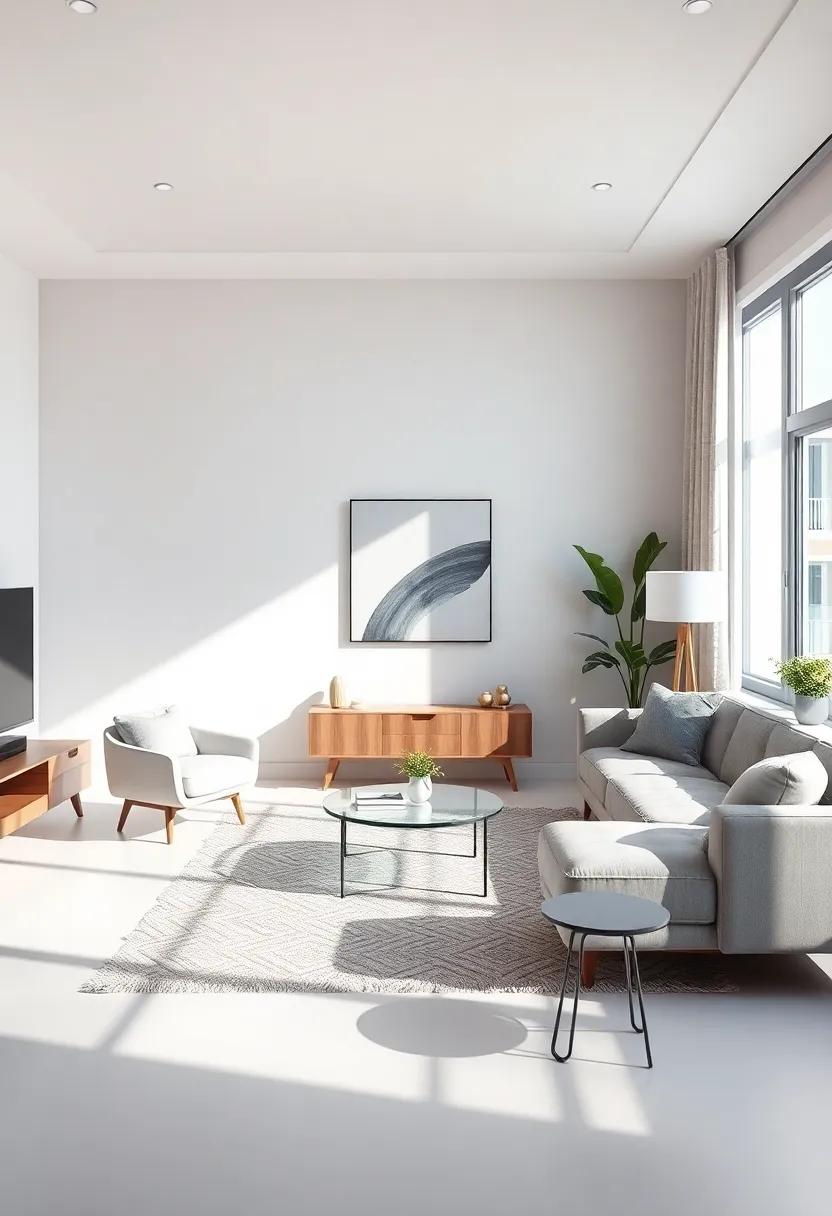
Mirrors can be the secret weapon in transforming a small living room into a space that feels much larger and more inviting. By strategically placing mirrors across from windows or light sources,you not only bounce natural light around the room but also create an illusion of depth. Consider the following tips for optimal placement:
- Reflective Walls: Use a large mirror as a statement piece on a wall to visually expand boundaries.
- Corner magic: Position mirrors in corners to enhance the sense of viewpoint and space.
- Layered Design: Combine mirrors of different sizes to add dimension and interest to your decor.
When selecting mirrors, think about the frame style that will complement your existing decor. A well-chosen frame can harmonize with your furniture and color scheme, making the mirror not just a functional piece but a stylish accent as well. For even more impact, consider mirroring furniture, such as coffee tables or console tables, which can cleverly reflect the surrounding space.
| Mirror Type | Effect |
|---|---|
| Framed Mirror | Adds character and structure |
| Full-length Mirror | Enhances vertical space |
| Wall-mounted mirror | Gains floor space |
for more insights on how to effectively use mirrors in your living space, check out Architectural Digest.
Designing with Scale: Selecting the Right Size Furniture
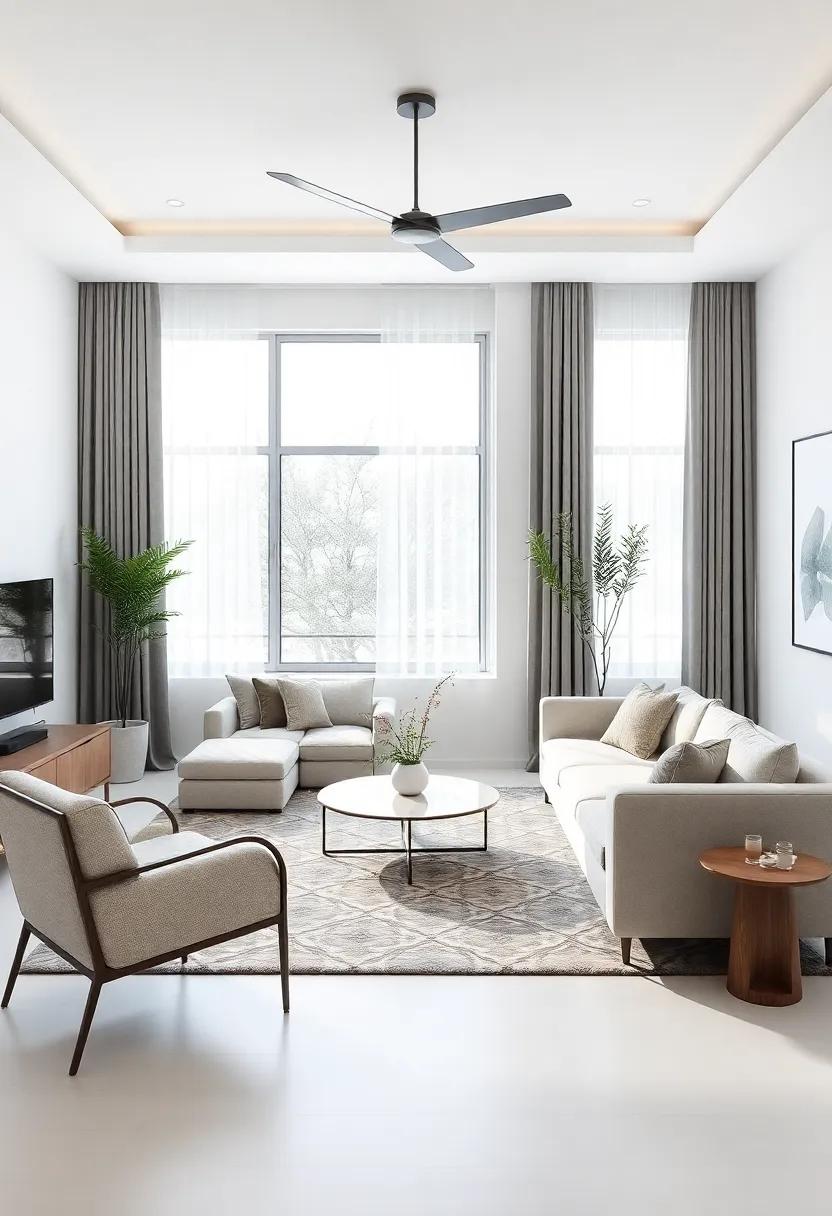
When furnishing a small living room, the scale of your furniture can make or break the overall ambiance. It’s essential to choose pieces that complement the size of your space while also providing functionality and style. Consider selecting slim-profile sofas that offer a cozy feel without overwhelming the room. A modular sectional can be rearranged to optimize flow and create seating for social gatherings. Remember,small accents can add character; think about accent chairs or ottomans that can double as storage solutions.
To effectively determine the right size furniture, take the following steps:
- Measure your space—length and width of the room, as well as doorways and windows.
- Create a layout—use graph paper or online room planners to visualize furniture placement.
- balance styles—mix various textures and colors using furniture that maintains a unified scale.
For more assistance on choosing the right proportions for your furniture, check out Houzz.
Crafting Zones with Area Rugs for definition and Comfort
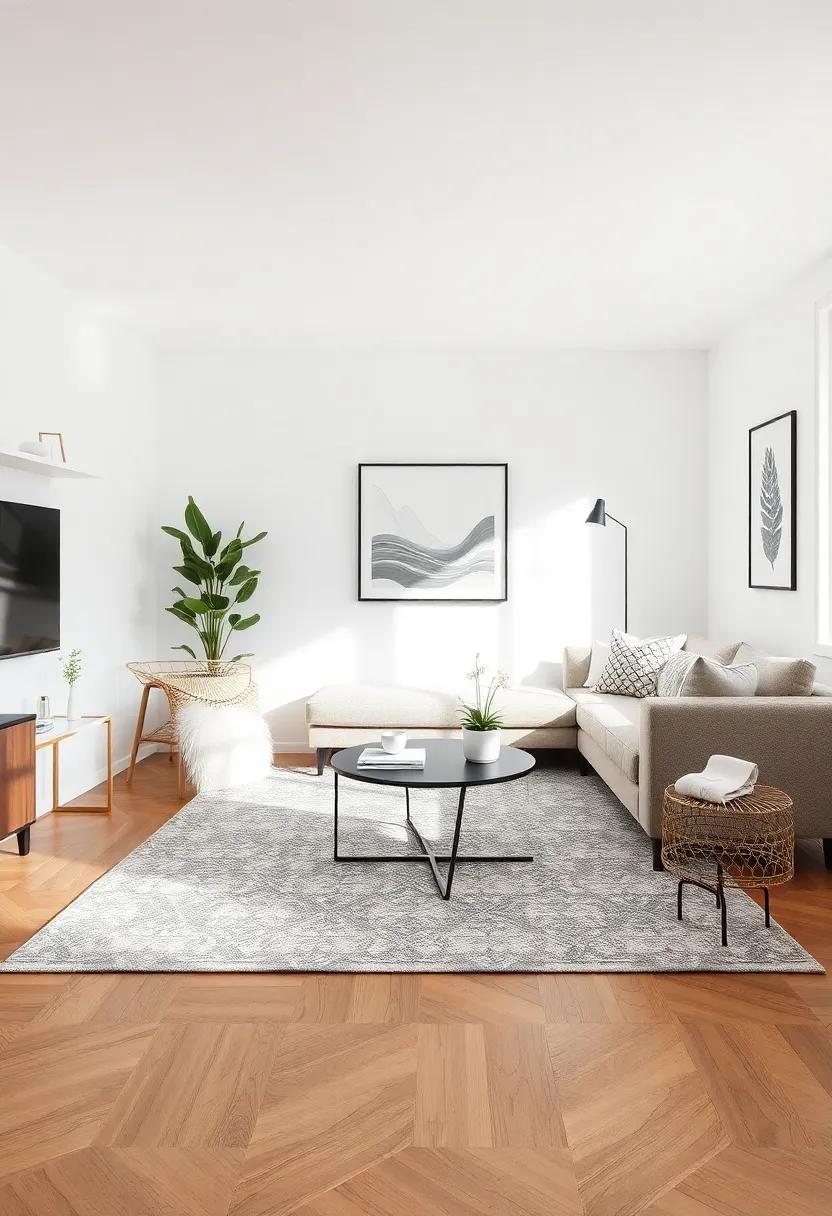
In open-concept small living rooms, area rugs serve as the silent architects of space, crafting distinct zones that promote both function and aesthetic appeal. By selecting rugs that align with your decorative theme,you can create inviting areas tailored to various activities. As an example, a plush rug under the coffee table can unify your seating arrangement, while a chic runner can delineate the path from the living area to the dining space. To maximize comfort and style,consider these rug features:
- Texture: A soft,inviting texture encourages you to relax and enjoy the space.
- Color: Choose colors that complement your overall color scheme to enhance visual flow.
- Pattern: Bold patterns can add interest, while subtle designs can keep the look fresh without overwhelming the space.
Beyond visual division, area rugs also play a practical role in enhancing comfort. They soften hard surfaces, providing a cozy base for your feet and a sound-absorbing layer that makes the room feel more intimate. When strategically placed, they can even improve acoustics, making conversations flow more smoothly in an otherwise open area. Here’s a handy table summarizing key factors to consider ahead of your rug purchase:
| Factor | Consideration |
|---|---|
| Size | Ensure it’s large enough to fit key furniture pieces. |
| Material | Opt for durable materials that can withstand foot traffic. |
| Maintenance | Consider rugs that are easy to clean and maintain. |
For an in-depth look at choosing the perfect area rug for your space, visit The Spruce.
Integrating Vertical Space Solutions for Clutter-Free Living
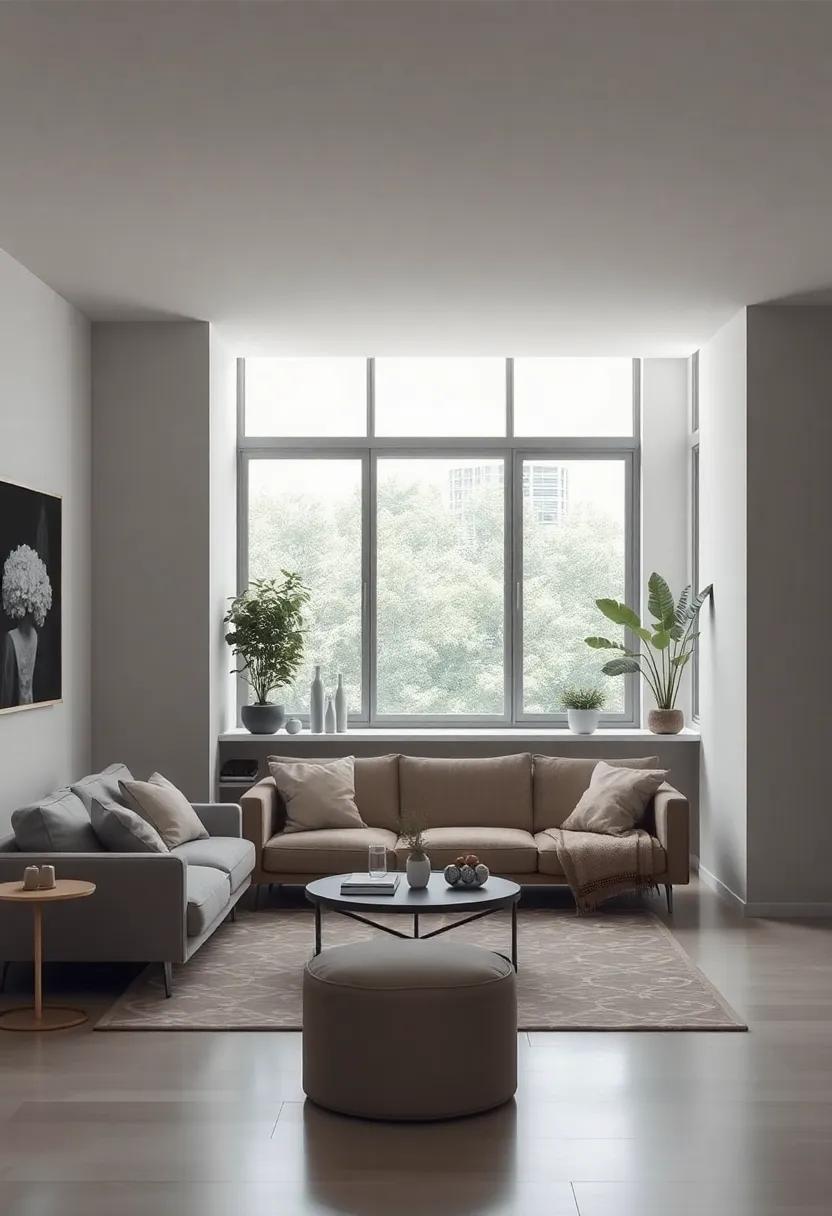
In the quest for a more organized and spacious living environment, integrating vertical space solutions can be a game changer. By embracing shelves, wall-mounted organizers, and hanging plants, you can transform any small room into a stylish yet functional space. Consider the following vertical elements to enhance your living area:
- Floating Shelves: Perfect for displaying books, decor, or plants without taking up floor space.
- Over-the-Door Racks: Utilize the back of doors for storing bags or accessories.
- Wall-Mounted Planters: Add greenery with minimal footprint, creating a fresh and inviting atmosphere.
Additionally, implementing multi-functional furniture helps in maximizing usability without sacrificing aesthetics. Choose pieces like ottomans with storage, nested tables, or murphy beds that can seamlessly integrate into your design while providing hidden space for your belongings. This can be visually represented as:
| Furniture Type | Functionality |
|---|---|
| Ottoman | Storage & Extra Seating |
| Nesting Tables | Flexible Surface Area |
| Murphy Bed | Convert a Room with Ease |
Utilizing these elements not only promotes a clutter-free lifestyle but also enhances the overall design of your space, making it both functional and visually appealing. For more tips on smart living space solutions, visit Apartment Therapy.
Opting for Minimalist Designs to Embrace Simplicity and Elegance
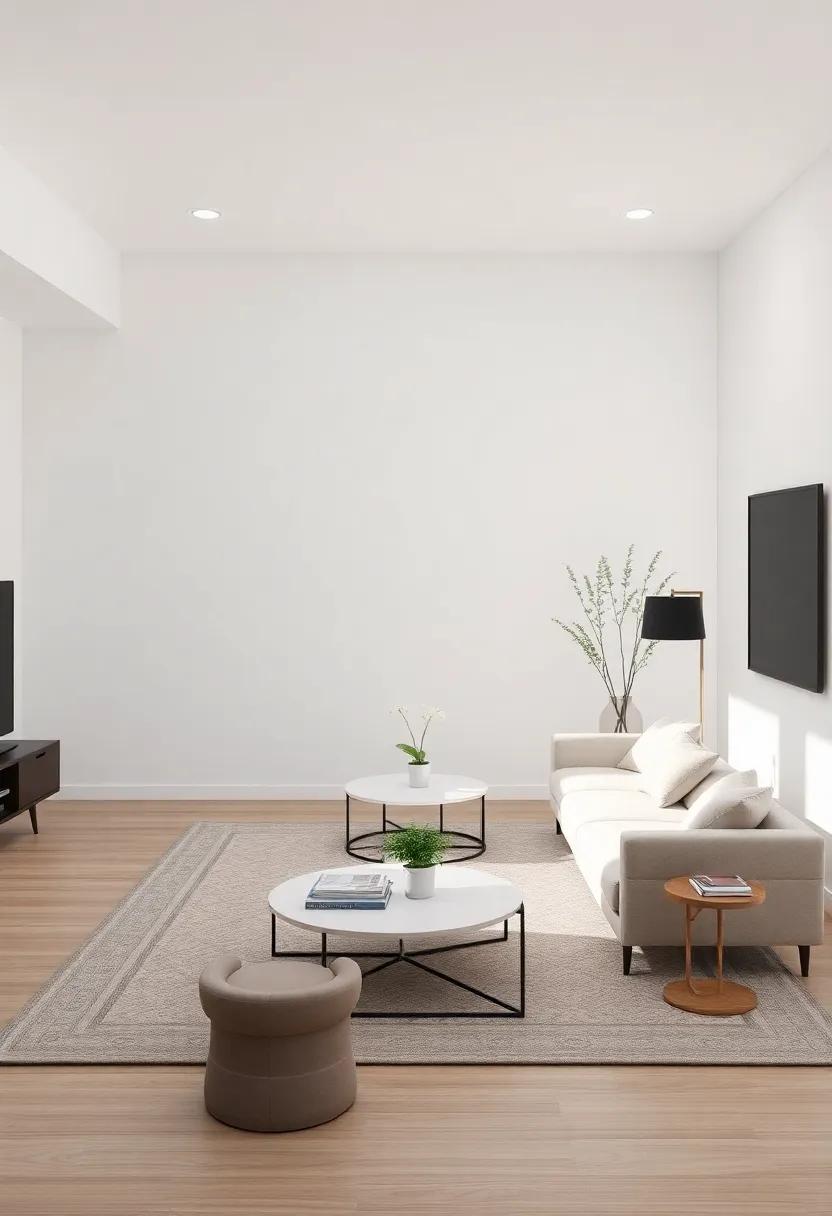
In a world brimming with excess and clutter,embracing a minimalist design can transform a small living room into a sanctuary of peace and serenity. By stripping away unnecessary elements and focusing on essential pieces, you can create a space that breathes both style and functionality. Neutral color palettes, such as whites, grays, and beiges, enhance the feeling of openness and allow natural light to flow freely, making the room appear larger.To further amplify this effect, consider incorporating multi-functional furniture that serves dual purposes, such as a coffee table that doubles as storage or a sofa bed for guests.
The beauty of minimalism lies in its ability to evoke elegance through simplicity. Choose a few carefully curated decor items and let them shine without overwhelming the space. Natural textures, like wood and linen, contribute warmth and visual interest, while statement pieces—such as a bold piece of art or a sculptural lamp—can act as focal points that draw the eye. By practicing restraint and focusing on the essentials—light, space, and form—your small living room can become a stylish yet comfortable retreat. For more inspiration and ideas on minimalist designs,visit Dezeen.
Selecting Stylish Storage Solutions That Blend with Decor
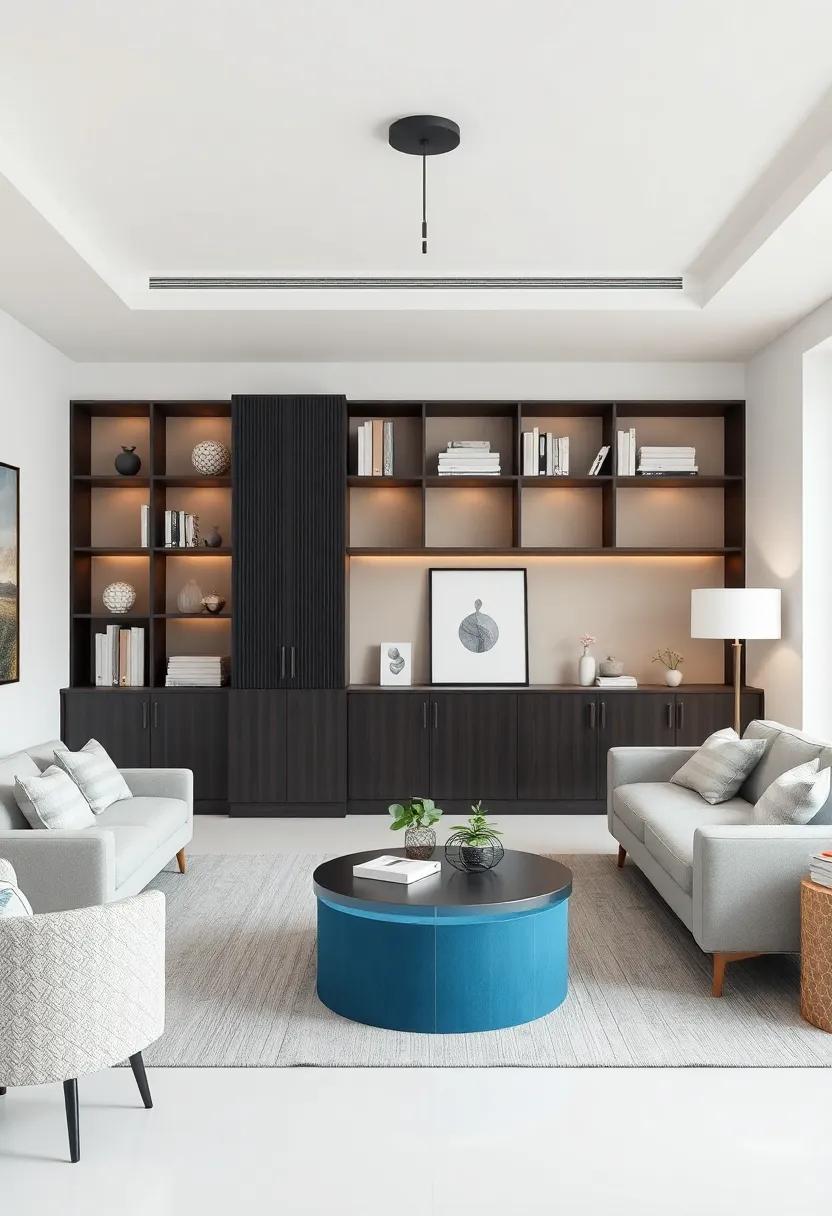
When curating your small living room, selecting storage solutions that harmonize with your decor is essential for achieving both functionality and style. Consider options that not only serve a practical purpose but also enhance the aesthetic. Built-in shelves can be a chic way to display books and decor items while maintaining a streamlined look. Alternatively, choose decorative baskets or boxes that complement your color scheme and textures, adding a layer of warmth to the space.
similarly, multifunctional furniture can offer stylish storage without compromising on design. Look for ottomans or coffee tables with hidden compartments to tuck away blankets and magazines. Floating cabinets can provide storage without overwhelming the visual space of the room, maintaining an airy feel. Here are some ideas to inspire your choices:
- Decorative storage boxes: blend functionality with style.
- Under-sofa storage: use the space beneath for boxes or drawers.
- Stylish bookshelves: open shelves can showcase art and books alike.
Using Lighting to Create Ambiance and Define Different Areas
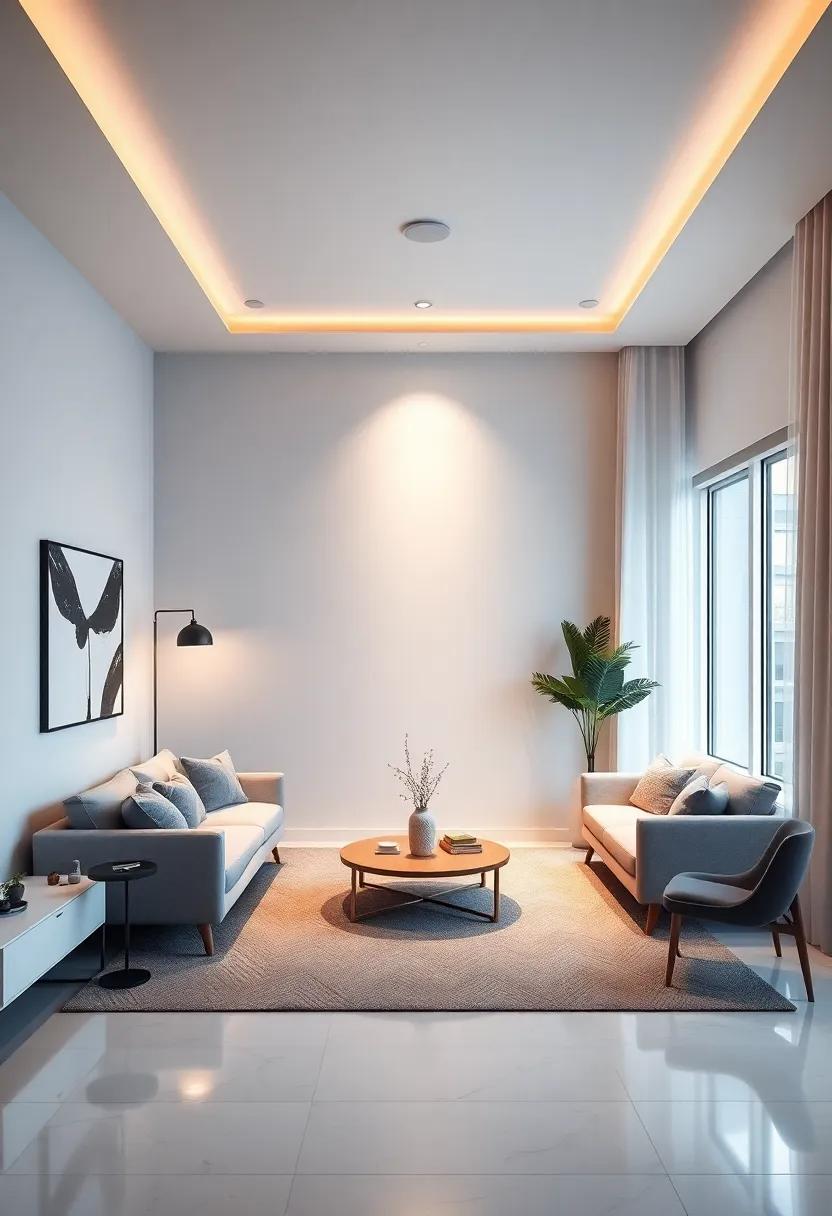
Lighting plays a crucial role in shaping the atmosphere of your living space, especially in an open-concept layout where distinct zones may blend into one another. By strategically using various types of lighting, you can define areas while adding warmth and depth to your small living room. Consider incorporating task lighting such as floor lamps or table lamps in reading nooks, while ambient lighting from overhead fixtures can illuminate the entire room. Accent lighting, such as wall sconces or LED strip lights, can highlight artwork or architectural features, drawing attention to specific areas and creating visual interest.
To maximize the design and mood, think about layering your lighting. A combination of softer lights for relaxation, such as dimmable options, paired with brighter lights for activities like working or entertaining, can transform your space depending on the occasion.Here’s a simple way to categorize your lighting:
| Lighting Type | Purpose |
|---|---|
| Ambient Lighting | General illumination |
| Task Lighting | Focused lighting for activities |
| Accent Lighting | Highlight features |
By focusing on the layering technique, selecting fixtures that complement your aesthetic, and ensuring that each area serves a specific function, you’ll create a visually cohesive and inviting environment. For more insights on lighting design and ideas, check out Architectural Digest.
Artfully Arranging Furniture for Optimal Conversation Flow

Creating a kind and inviting atmosphere can be achieved through thoughtful furniture arrangement that promotes easy conversation among guests. Consider using a combination of seating options, such as sofas, chairs, and ottomans, to create intimate groupings that encourage dialog. Aim to arrange the furniture in a way that the participants face one another,allowing for natural interaction.You can also utilize area rugs to define different conversation areas, providing visual warmth and comfort even in a smaller space.
Additionally, implementing multi-functional furniture can enhance conversation flow without sacrificing style. Pieces like a coffee table that doubles as a storage unit or a sectional that offers flexible seating options can keep the area uncluttered while inviting gatherings. Be mindful of walking paths; ensure that furniture placement allows for smooth movement throughout the room. Utilizing lighter colors,textures,and materials can visually expand the space,making the area feel more open while maintaining a cohesive design. For more inspiration, you can explore resources on Houzz.
Infusing Personal Style Through Thoughtful Decorative Elements
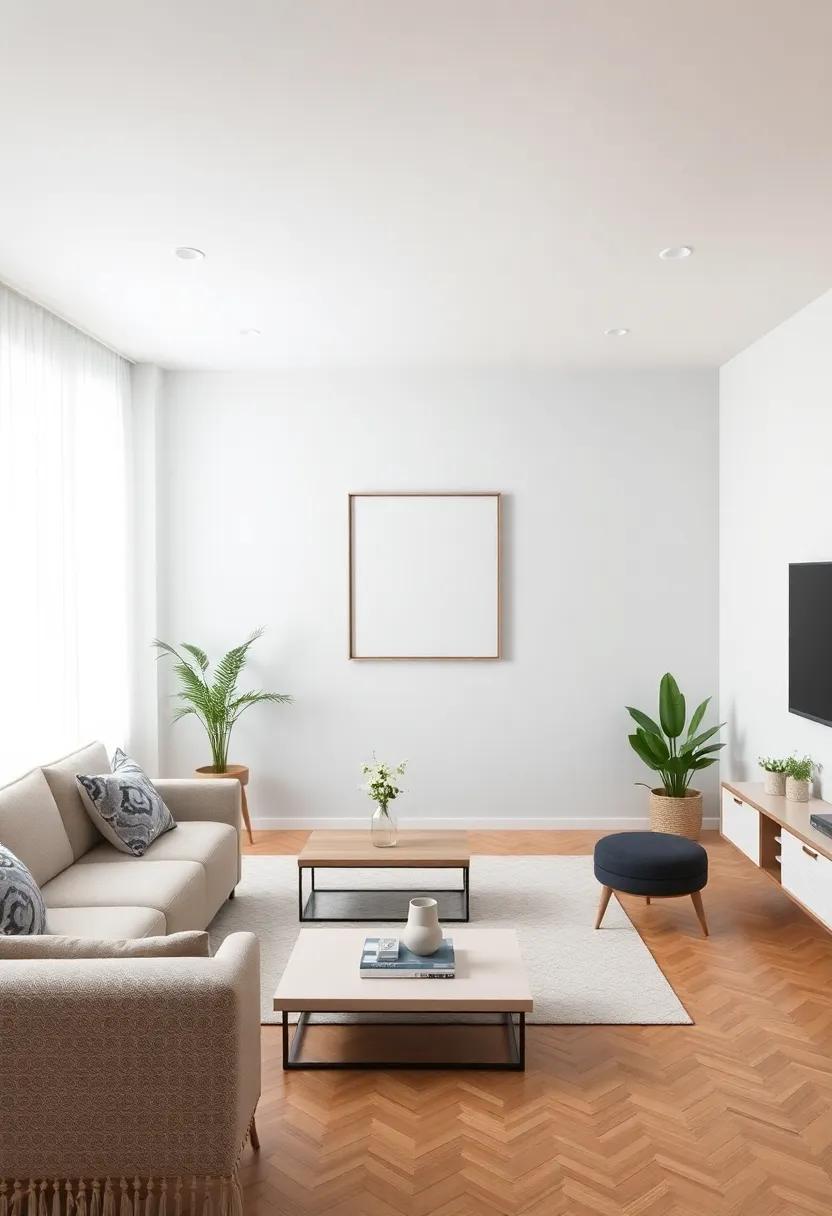
In an open-concept small living room, every element is an opportunity to express your unique personality. To create a space that feels distinctly you,consider incorporating decorative elements that are both functional and visually appealing. start with statement wall art or a gallery of personal photographs that resonate with your experiences and journey. Incorporate textiles such as throw pillows,blankets,and rugs in colors and patterns that reflect your style; these can easily transform a minimalist space into a cozy retreat. Don’t be afraid to mix textures — a woven basket paired with a sleek metallic lamp can create an engaging focal point that draws the eye.
Another essential aspect of achieving a personalized touch is through the clever use of decorative shelving. Displaying your favorite books, trinkets, or travel souvenirs can narrate your story while keeping your space organized. consider grouping decor into themes or color palettes for cohesive styling. To enhance functionality, you might also explore multi-purpose items like a stylish ottoman that doubles as storage or a chic side table that contributes to the aesthetics without overwhelming the area. these carefully curated decorative pieces will not only maximize style but also add depth and character to your small living room dreams.For more inspiration, visits sites like apartmenttherapy.com can provide ideas on blending style with smart small space strategies.
Choosing Window Treatments That maximize Light and Privacy
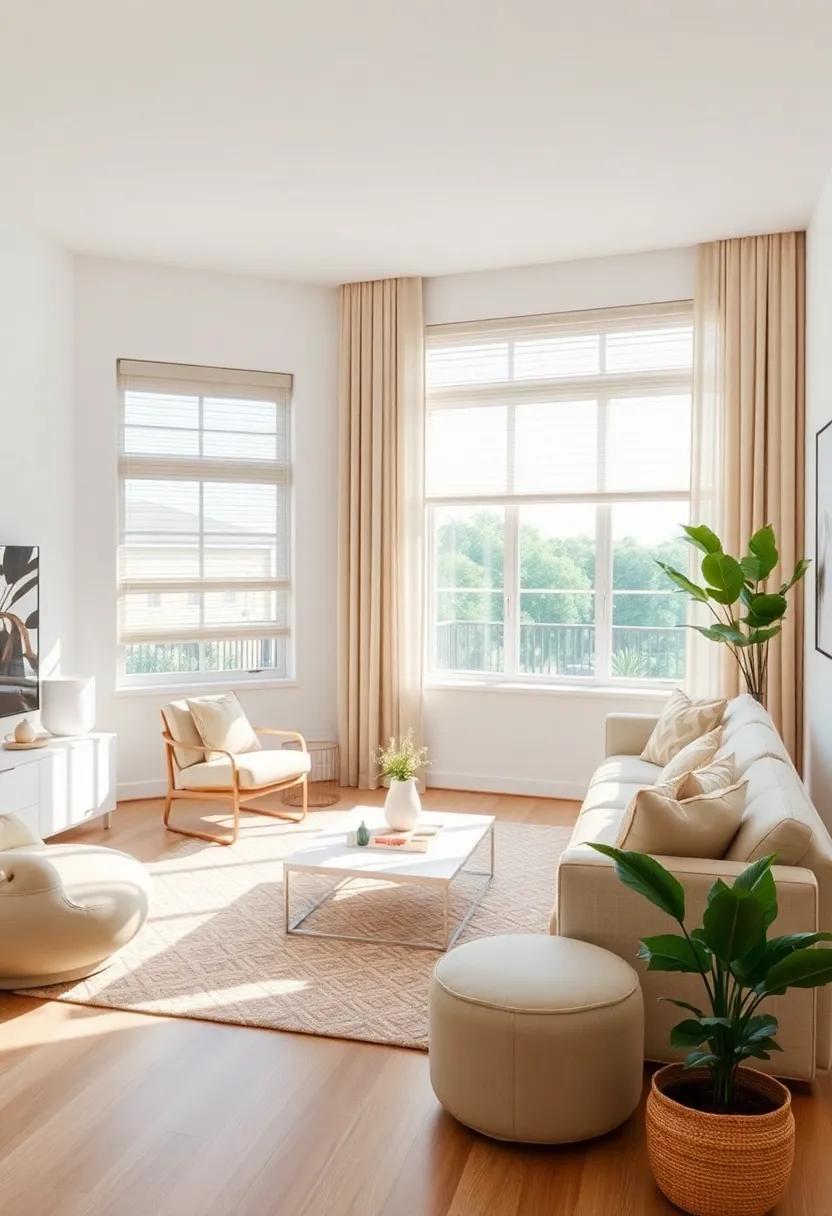
When selecting window treatments for an apartment that seeks to balance light and privacy, consider materials and styles that enhance the overall aesthetic while serving practical functions. Sheer curtains or lightweight drapes are fantastic for allowing natural light to filter in while together offering a sense of privacy. For an added layer, roller shades in light-filtering fabrics can be rolled down during peak sunlight hours, ensuring that your living space feels open yet protected. A blend of textures can create a compelling visual appeal; think of combining sheer panels with a heavier curtain that can be drawn for complete privacy in the evenings.
Beyond fabrics, the positioning and hardware of your window treatments can also play a notable role. Opting for pole systems that extend beyond the window frame gives a sense of extended height, making ceilings appear taller and rooms airier. In addition, consider using adjustable blinds that can be tilted for customized light control throughout the day.Incorporating plantation shutters not only provides a stylish edge but also allows you to maintain both light and privacy seamlessly. For further inspiration and ideas on stylish window treatments that offer both light and privacy, explore resources like Architectural Digest.
Incorporating Indoor Plants for a Refreshing Touch of Nature
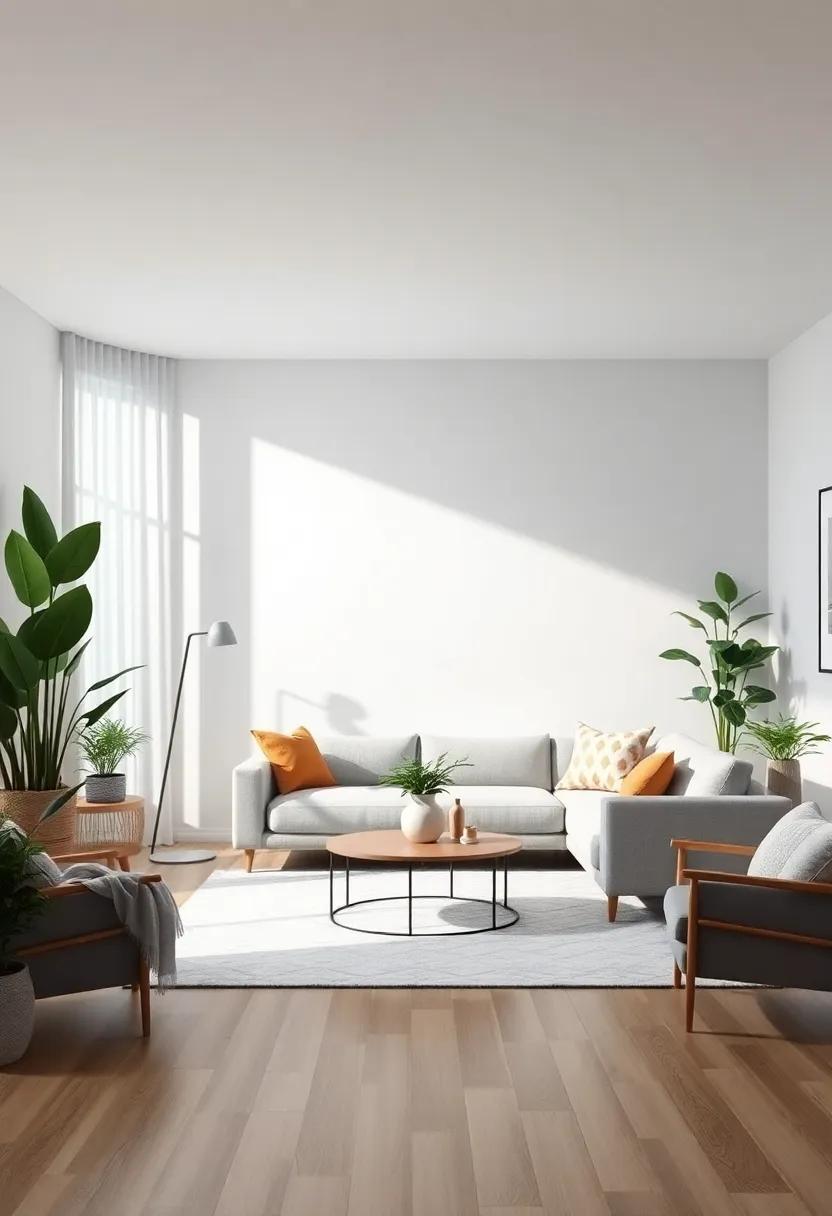
Bringing a touch of greenery into your living space not only enhances aesthetics but also promotes a sense of calm and well-being. Indoor plants can seamlessly fit into small living rooms, where every inch counts. To create a harmonious environment, consider incorporating a variety of plants with different heights, textures, and colors. Opt for hanging plants like pothos or spider plants to utilize vertical space, while adding a stylish plant stand for larger species such as fiddle leaf figs or peace lilies can create visual interest at eye level.
When selecting plants, keep in mind factors like light conditions and maintenance requirements to ensure longevity and health. Choose low-maintenance varieties like succulents or snake plants if you prefer a hands-off approach. to inspire your design, here are some tips:
- Group plants: create clusters for a fuller look and enhance your decor.
- Use decorative pots: Choose pots that fit your overall style and add a pop of color.
- Consider functionality: Use plants as natural dividers to define spaces without closing them off.
For more inspiration on types of indoor plants and their benefits,check out The Sill, a resource dedicated to houseplants. Understanding the right plants for your space can change not only the look of your living room but also the vibe it exudes.
Creating a Cozy Nook for Relaxation and Reading in Small Spaces
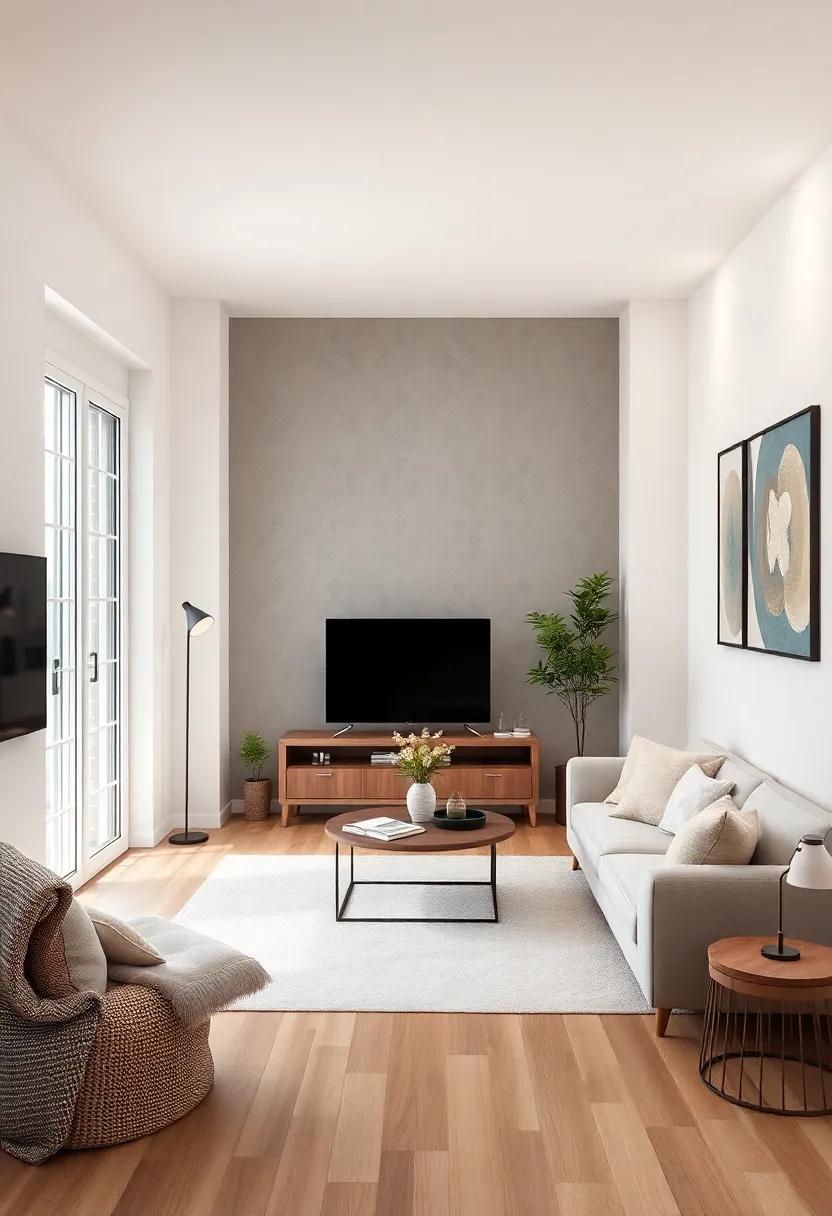
Transforming a small corner of your living room into a cozy reading nook can significantly enhance your relaxation experience. start by identifying a quiet space with good natural light, which is perfect for curling up with a book. Use a comfortable chair or even a lounge cushion to create a welcoming atmosphere.Layering in soft throw blankets and plush pillows adds essential comfort and style. Consider adding a small side table to hold your favorite mug or a sampling of currently-reading books. a couple of indoor plants can breathe life into your nook, enabling you to feel more connected to nature while diving into your literary adventures.
Lighting plays a crucial role in setting the mood for your peaceful retreat. A stylish floor lamp or a table lamp with warm tones can provide the perfect glow for nighttime reading sessions. You might even incorporate a couple of led candles to create a tranquil ambiance without the worry of open flames. Additionally, try arranging your books in a unique way—such as stacking them horizontally and vertically, or using an antique trunk as a makeshift coffee table—to add visual interest while keeping your space organized. Lastly, don’t forget to personalize it with art or photos that inspire you, ensuring that your cozy nook reflects your unique style and serves as a true sanctuary within your small living area. For more ideas on creating thoughtful spaces, visit apartment therapy.
Utilizing Open Shelving to Showcase Style and Maximize storage
Open shelving has evolved from a mere trend to a staple in contemporary interior design,especially in small living spaces. By embracing this concept, apartment dwellers can not only create a visually appealing environment but also optimize their storage capabilities. Using painted shelves can introduce a pop of color to neutral walls, while displaying books, plants, or art adds personality and sophistication. To keep the space organized, incorporate baskets or decorative boxes to hide away smaller items while still showcasing your unique style. Whether it’s kitchenware in the dining area or curated collections in the living room,open shelving can serve various roles throughout the apartment.
To further enhance the allure of open shelving, consider selecting a mix of materials and textures. Rustic wood, sleek metal, and glass elements combined create visual interest and depth. A carefully curated arrangement can act as a focal point, guiding the eyes across the room. When designing these shelves, think about incorporating a few key pieces into the layout: a statement vase, an artistic sculpture, or a collection of travel souvenirs. Establishing a balance between functionality and aesthetics ensures that your open shelving not only serves as a stylish feature but also addresses your storage needs effectively. For inspiration and examples, you might explore resources from Apartment Therapy.
Key Takeaways
As we conclude our journey through the art of designing an open-concept small living room for apartments, it’s clear that style and space can harmoniously coexist, even in the coziest of environments. By thoughtfully integrating multifunctional furniture, employing clever storage solutions, and utilizing design elements that enhance the sense of openness, you can transform a compact area into a stylish sanctuary that reflects your personal taste.
Remember,the essence of an effective design lies in its ability to cater to both function and aesthetics. Each piece, color, and arrangement plays a crucial role in creating an ambiance that feels both inviting and spacious. Embrace the challenges of small living with creativity and imagination, and you’ll discover that even the tiniest of spaces can tell a grand story.So go ahead, roll up your sleeves, and start reimagining your living room. With the right approach, you’ll not only maximize your space but also curate a stylish retreat that you’ll love to come home to.Happy designing!
transforming your apartment into a stylish and space-savvy open-concept living room is not only achievable but also a rewarding endeavor. By implementing thoughtful design choices, maximizing natural light, and selecting multifunctional furniture, you can create an inviting atmosphere that reflects your personal style while optimizing every inch of your space. Weather you’re entertaining guests or enjoying a quite evening at home, an open-concept layout can enhance your living experience and make your apartment feel more spacious. Embrace your creativity, experiment with different arrangements, and watch as your living room transforms into a harmonious blend of style and functionality. Happy decorating!
As an Amazon Associate I earn from qualifying purchases.
